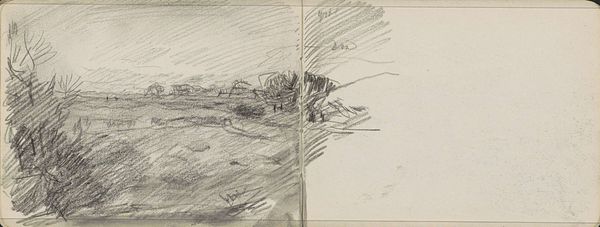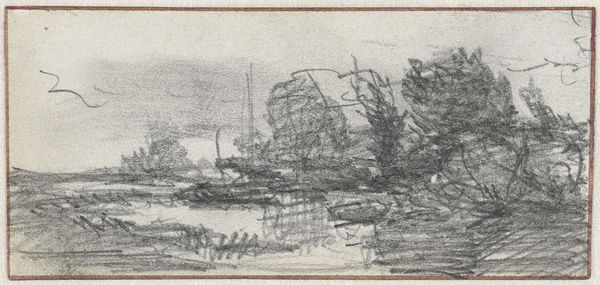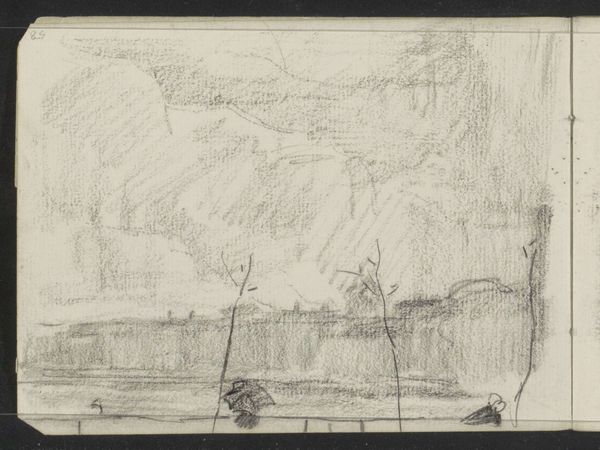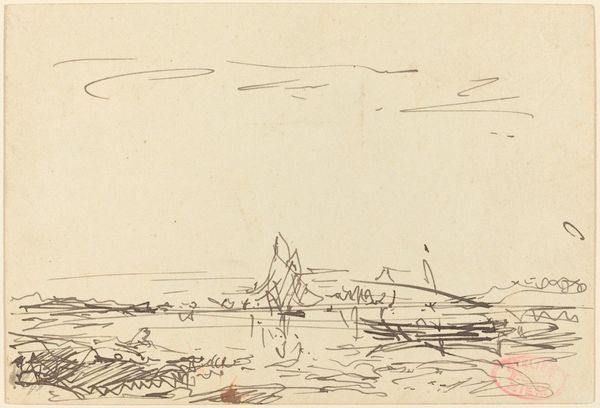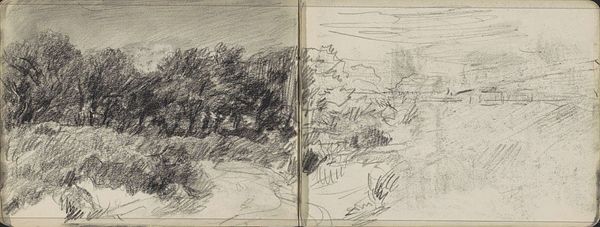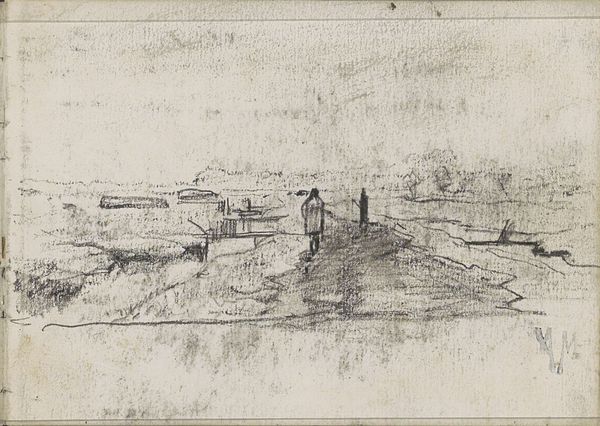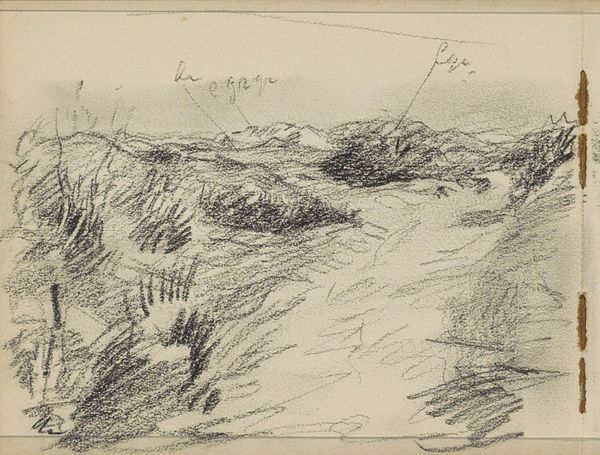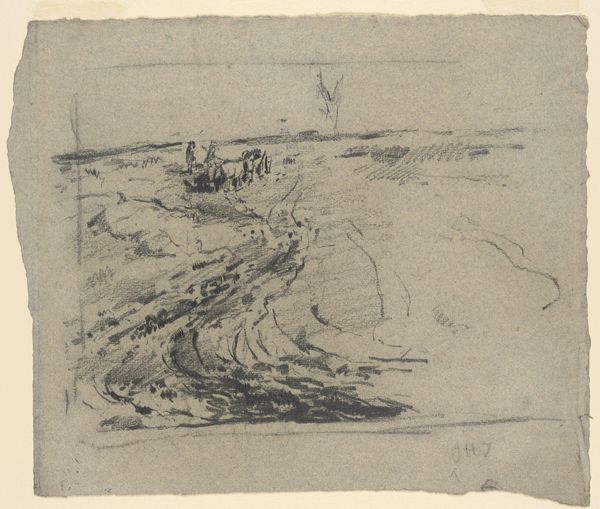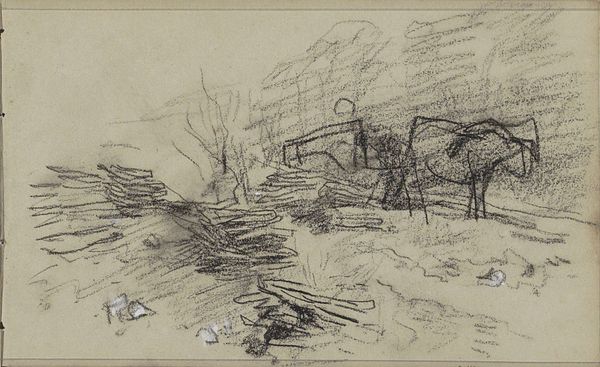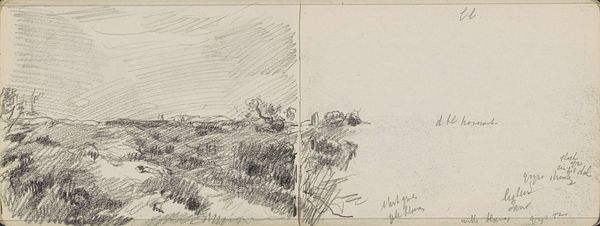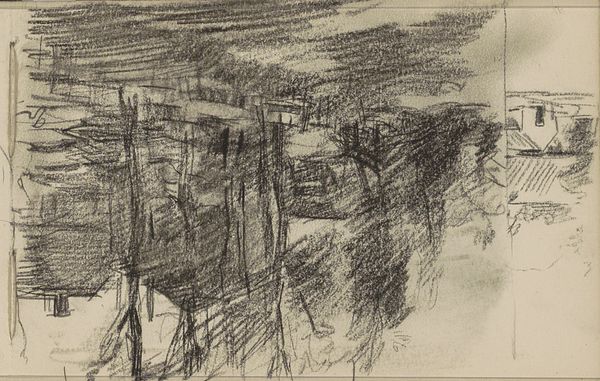
drawing, graphite
#
drawing
#
quirky sketch
#
impressionism
#
pen sketch
#
landscape
#
personal sketchbook
#
idea generation sketch
#
sketchwork
#
pen-ink sketch
#
pen work
#
graphite
#
sketchbook drawing
#
sketchbook art
#
realism
#
initial sketch
Copyright: Rijks Museum: Open Domain
Curator: This spirited sketch before us is titled "Grazing Cattle in a Meadow" by Anton Mauve, dating somewhere between 1848 and 1888. It’s a graphite drawing currently held in the Rijksmuseum collection. Editor: My initial impression is how gestural and raw it feels. You can almost feel the artist’s hand moving quickly across the page, capturing a fleeting moment. It’s more about suggestion than detailed representation, almost an impression more than observation, in that sense. Curator: Precisely. Mauve's association with the Hague School situates this piece within a broader movement reacting against academic painting. It moves art out of the studio and into reality, prioritizing experience over flawless technique, very interesting if you contextualize the Dutch landscape tradition and its artistic and economical development over centuries. This approach dismantles traditional notions of how painting is produced in a capitalist market. Editor: Considering Mauve's role in the Hague School, I wonder what these cows represented at the time. They seem like working class members. Do they portray some reflection of rural workers? The sketch seems unromantic somehow, closer to the labor and exploitation reality Curator: An astute point! Agrarian imagery often functioned to naturalize social hierarchies. However, Mauve's informal, rapid style could disrupt any inherent idealization. And yet it may be difficult to disassociate from the symbolism with cattle in dutch painting through time Editor: Exactly! Looking closer, the quick lines, the sketchy composition - there's a real tension. This "unfinished" quality feels very deliberate, I imagine Mauve aimed to open space for subjectivity and new readings of what can be considererd part of artistic and political reflection at the time Curator: Indeed. Viewing this piece alongside other Hague School artists can illustrate the evolving role of landscape painting in constructing national and class identity, a lens that also helps us view labor force representation then and nowadays. Editor: Well, examining this sketch from a contemporary perspective sheds light on ongoing concerns about our interaction with labor in visual form. I certainly see how such historical examination can enhance how we experience the art presented in front of us, bridging a discussion that never stops.
Comments
No comments
Be the first to comment and join the conversation on the ultimate creative platform.
